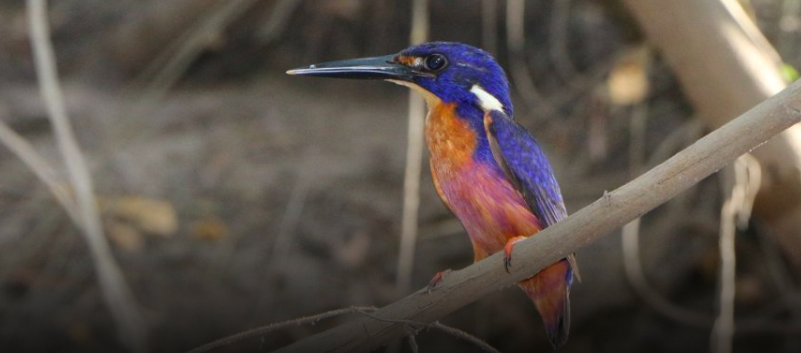Kingfishers Winging Way To Alamora
A flash of blue and orange catches the sunlight as it flies swiftly by, a distinctive trill rises like a nail run down the teeth of a comb. The shy kingfisher is a stunning sight and sound as it ducks and weaves near slow-flowing water. And it will soon be commonly sighted along the waterways of Alamora.

Legend has it the kingfisher was the first bird to fly from Noah’s Ark after the flood, and so it received the orange of the setting sun on its breast and the blue of the sky on its back. Its glamourous colours are what inspired Villawood artist-in-residence Folko Kooper when choosing the concept for his latest signature work of art.
Birds are a common theme of Folko’s work, whether they are small and fragile, powerful and commanding or slightly comical. His whimsical sculptures of eagles and cockies, wrens, lyrebirds and emus perch on posts and wander the terrain, watching over other Villawood communities. Collectively, his works are a Villawood signature, pointedly focussed on connecting the community and beloved by residents. This series will be no different.
Villawood senior development manager Will Nickholds says the kingfisher was chosen as a species complementary to the central waterway at Alamora.
“It also shares the Alamora brand colour, which is a vibrant teal,” Will says. “In addition to this, a number of our purchasers are of Indian heritage and the kingfisher is a revered and auspicious bird in Indian culture. We wanted it to be relevant for them.”
Folko will design two main feature sculptures to welcome residents and visitors. One will be beside the entrance to the community, a further series will be dotted along the waterway and reflect the water with flashes of colour and light. The wings of the birds will be teal in colour, and the rest will be made of the artist’s trademark rust-like Corten steel.
Folko says he likes to create art that illustrates how we live and interact with nature, with one another, and how communities grow and mature.
“It’s a way to bring people together and bring down barriers between people,” he says. “I think people living with art in their community have a proud feeling of ownership. It helps to define the boundaries of the place.
“At the same time, my sculptures are not designed to be taken too seriously. What I really want is for people, especially the residents, to enjoy them and so enjoy life.”





